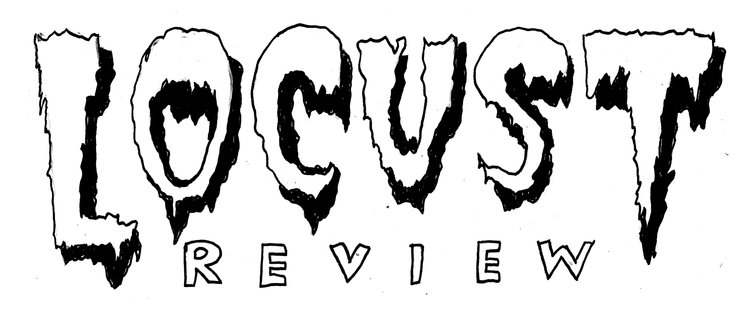As part of a reorganization at Locust, we are seeking art, poetry and fiction, but also non-fiction, essays and reviews for the upcoming issue. Fiction submissions should be less than 3,500 words. Poetry submissions should be less than four pages. Non-fiction submissions should be less than 5,000 words for essays and less than 2,500 words for reviews. Images should be submitted in jpg format at 300 dpi, and at least eight inches in one dimension, and be accompanied by the title, date, and materials used in creating the work.
Read MoreAnother Multiverse is Possible
The multiverse trope in contemporary culture is overdetermined. It is ideological. It flows with the fragmented totality of an attenuating neoliberalism. It is also a result of the economy of digital media. On streaming services, the multiverse tropes of Star Trek, Star Wars, Marvel, and other intellectual property franchises reflect the expansion of an attention economy. Disney’s acquisition of Lucasfilm and Star Wars for more than four billion dollars requires the maximization of content production to realize future profits. A steady output of content must be produced to capture attention. In this way, the multiverse trope is also phenomenological. Digital media, along with the chaos of gig economics and neoliberal precarity, create a sense of “everything everywhere all at once.”
Read MoreMonsters Are Coming
The formation of the proletariat by capital’s historic crimes — and the ongoing recomposition of the class by imperialism, racism, heterosexism, and immiseration — is not unlike the creation of Frankenstein’s monster. The working-class, as a whole, is a disordered and chaotic body. Labor was (and is) formed through the theft of forests, farms, continents, and people. It was (and is) formed in the creation and displacement of entire industries, gender norms and the shifts in social reproduction, the invention of “races” and “nations.” The targets of capital’s crimes were (and continually are) fused together and torn apart in their relation to capital. Labor does not become a class “for itself” by pretending otherwise. It must study the journals of the “men who made it.” But the class becomes conscious when each disordered element of the class defends every other disordered element.
Read MoreWars Beneath
The following editorial was published in Locust Review #9 and written in late fall (2022): There is a prevailing sense of being under siege. It is felt in our bones. It turns our stomachs inside-out. It chokes our arteries with anxiety.
Read MoreThe Utopia Principle
Read MoreDear comrades-descendants, the labourers of the 20th century are writing to you. Tell your children and grandchildren how we struggled for your right to immortality. We lived in heroic times when great discoveries were made, when the world was shaken by revolutions and wars burned the planet. […] You have probably already eliminated all harmful bacteria and viruses and live without ageing or sickness. But it was us who helped you in this, when we discovered the mysteries of cancer and overcame the barrier of tissue incompatibility.
Missing Days
Early in US history, graveyards were chaotic tumbles in the middle of cities. In the late 19th century, however, there was a suburbanization of death. Large new cemeteries were built in the farmlands and woods outside town. The ramshackle graves in the cities were sometimes a health hazard but also a site of ideological discomfort for the bourgeoisie. In Chicago, the silty earth near Lake Michigan would sometimes belch up a buried corpse. Wealthy cosmopolitans increasingly envisioned grassy fields with trees housing family mausoleums like estate mansions. Such stately accommodations were out of the reach for workers. For the poor there was a potter’s field.
Read MoreCyborgs! Shoot the Moon
WHAT IF we become cyborgs right before the world ends, and because we are cyborgs we can no longer fear the apocalypse? Does the glowing sky on fire become, in our minds, an Instagram filter?
Read MoreWorking-Class Art Against the Slow Motion Apocalypse
When more and more disasters are reached — in the form of personal catastrophe, a continent on fire, a city underwater, a state without water and electricity, a plague uncontrolled, a planet on the verge of ecological catastrophe — capitalist realism can only shrug (and hone new forms of disaster capitalism).
Read MoreNorming in America
“I wanted to greet you, welcome you, embrace you, but ‘Normal’ kept getting in the way. I wish you, the Old King, the New King, and the Old King’s soldiers, good luck.”
Read MoreLabor Under An Alien Sky
We found the corpse of Capitalist Realism. Rona-riddled, the initials “ACAB” carved in its forehead. It was discovered in the burnt shell of a Minneapolis police station. On discovery it opened its eyes and stood up and told us to go back to work. We refused. It reached for us, moaning a voracious hunger of unholy sadism, unquenchable violence, an unknowable cosmic horror, stinking of gout and fresh teargas.
Read MoreWorkers! Jump the Shark!
“BE REALISTIC” we are told. The weather is rejecting us, fascism has resurrected itself, pogroms rage, new pandemics knock on our doors, and yet, “be realistic.”
“Be realistic.” The favorite refrain of those who, in their blindness to history, allow history to be changed in ways they cannot understand. “Be realistic.” The slogan of those who love their power and privilege while denying they have any of it. “Be realistic.” The bootlicker’s mantra, chanted when the independent thoughts they have repressed begin to surface.
Read MoreWe Demand An End to Capitalist Realism
TEN YEARS ago, as the Great Recession ripped through people’s lives, the left-wing cultural critic Mark Fisher penned his book Capitalist Realism. The book diagnosed a cultural logic of late-late-capitalism in which the Thatcherite idea of “There Is No Alternative” had been diffused through every politico-economic institution, every cultural manifestation, how we regard work and education, consumption and self-expression.
Read More
